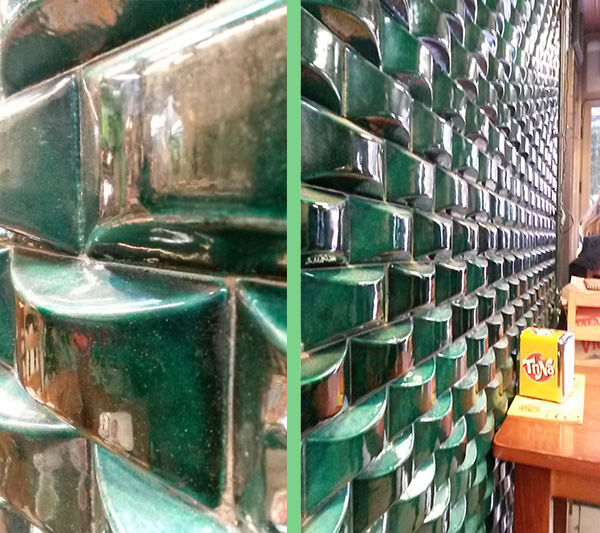Mirror mirror on the… screen.
- alejandro escobar
- Dec 30, 2015
- 2 min read
Updated: May 21
The last couple of weeks I have been thinking about mirrors and how they reflect reality, It came to my mind for two reasons: the first one is that my girlfriend is doing her MA research on mirrors in photography so I’ve been discussing this topic with her, the second reason is that on a trip to Barcelona I ended up having lunch in a special little restaurant with a cool tiled wall. I took some interesting pictures of it.

Thanks to this experiment, I’ve decided to simulate the same situation by creating a 3D object and using it to reflect a photograph. To be thankful, I decided to use my girlfriend as the model.
So far, I’ve made 3 different prototypes:
-Simple object for reflection (to get familiar with the digital process).

Reflection #1:
In this piece I was trying to understand how to simulate the physical reflection, the end result was a bit unexpected put it gave me elements to plan something more interesting, I would like to add that at the moment I have little control over the layout of the image and I’m not yet able to add more than one image. One interesting thing I’ve found is that I can use a 3D digital object to actively interact with the image; it does not have to be a one-way process like I have done in the past.
-Complex object for reflection


Reflection #2:
Things got more interesting when I did this other piece, it reminded me of the work of Anne Spalter, an artist I saw at the Lumen Prize conference. At that time, I was captivated by the possibilities of her video process. In this case, I think I found a different way to obtain the thing I found interesting in her work, but at the same time, I gained more perspective to move forward in my own direction.
-Complex object animated reflection
Thanks to the previous result, I wanted to take things forward to see how this image reflects my work on a moving object. I was particularly interested in seeing the way transitions occur. This was a very simple animation to understand the process.
Reflection #3:
This was an interesting result, I would like to take some time to think about the outcome. At the end, I’m able to control the reflecting object, but still not able to have a lot of control over the reflected image. I would also like to think about how to explore video pieces because at the moment I am centred on 3D printing, either way, I’m really happy about this experiment, I know that shortly I will make more of this.
Final reflection:
Lately, I have been looking at some of the work of Francis Bacon; the way he treats space, the way he moulds the figures, the colours, the expressions on the brush… in a way, I feel I am dealing with some of the same questions he had in his mind.
Right now, I’m focused on how to approach the boundaries between visual realism and abstraction, and I feel that the mirrored image is an interesting asset to obtain some kind of appealing image that blends abstraction and visual realism in a flexible and captivating way.



Comments